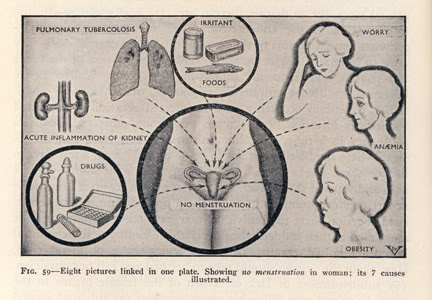Guest Post By Elissa Stein
Cross-posted at Wonders & Marvels
While the uterus is a remarkable part of a woman’s anatomy—it can house a growing baby, then shrink back to its original size, work month after month for 40 or so years regenerating its lining, keeping hormones in check—it is part of a greater whole.
But ancient Egyptians believed the uterus was a free-floating, independent, autonomous organ that wandered the body, its traveling ways causing all sorts of mental and physical maladies, disturbing and disrupting women from the inside out. A visit upward created respiratory issues, with anxiety thrown in, too much movement down south—intestinal distress.
To combat these problems doctors tried solutions at both ends, either feeding noxious substances to women, hoping to force the uterus away from the lungs and throat, or placing sweet smelling substances on the vulva, trying to coax the errant traveler back into place. Another solution? Marriage. Actually, sex. But, back then, sex alone was not prescribed by doctors as a viable treatment.
The ancient Greeks also blamed the female-centric organ for everything from seizures to depression. Their word for uterus, hystera, is the root of both hysterical and hysteria. From the beginning of recorded history, hysterical behavior—out of control emotions, irrational fears, unregulated, over-the-top conduct—was associated with women, the uterus the epicenter of blame. In fact, for centuries, a hysterectomy, or removal of the uterus, was thought to cure emotional instability, as well as a host of other unrelated symptoms.
Hysteria was a medical diagnosis in the United States until 1951. 1952? The term PMS was coined, a catchall diagnosis that picked up where hysteria left off. And while people no longer believe the uterus has a mind of its own, it’s still used as the hapless scapegoat for countless unexplainable symptoms.
Elissa Stein’s latest book, with Susan Kim, is Flow: The Cultural Story of Menstruation. Other projects include visual histories of iconic pop culture, New York City adventures with kids, and interactive thank you notes. She lives in New York City with her family.


